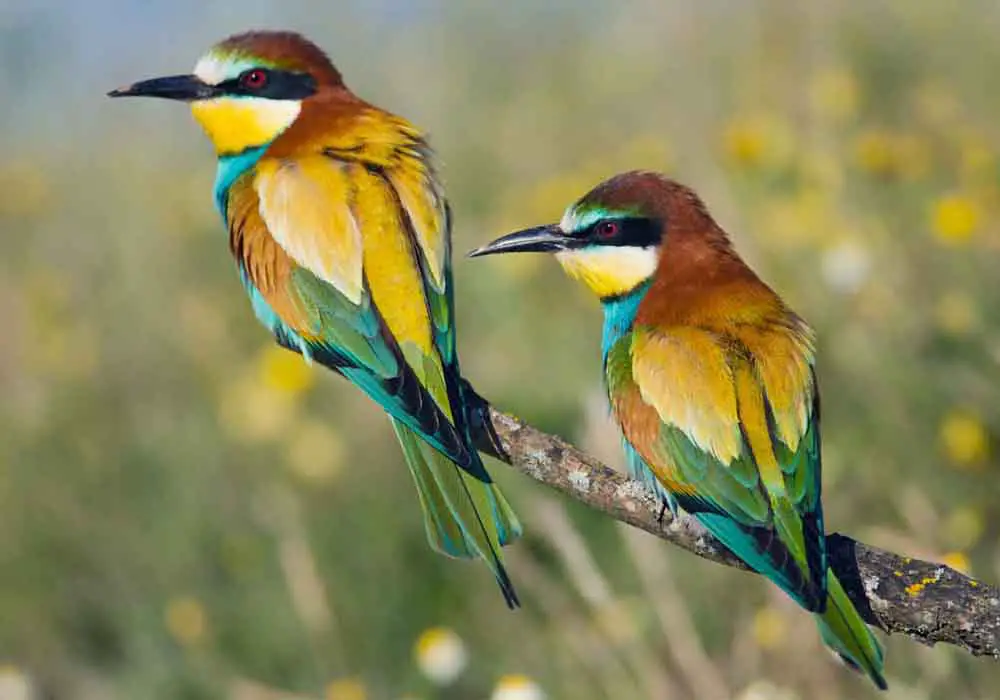Why Do Birds Have Wings
and Feathers?
Birds are peculiar and unique creatures. They're a wonder to observe, with their distinctive feathers and flighty nature, but if you stop to think about it, they're kind of odd. What exactly makes them so different from their non-flying relatives and why do birds have wings and feathers?
Birds are the only vertebrates to have evolved wings independently from other species, making their flying ability a unique feat. While their wings enable them to take flight, feathers are another inherent characteristic. Feathers help regulate bodily temperatures and camouflage them from predators.
Birds are the only animals with this kind of appendage. They're different from mammals, reptiles, and amphibians because their ancestors developed wings at some point in their evolution. In this article, we'll look closely at a bird's two distinct features.

Bird's Wings Are a Feature of Evolution
Birds have many features that make them unique among animals. They have feathers, hollow bones, and beaks, and they fly. However, probably the most striking thing about birds is their wings.
Birds are the most diverse class of vertebrates on Earth, boasting more than 11,000 species. The evolutionary changes that led to this incredible variety have shaped their development in many ways–one of these is the presence of wings.
Birds evolved from dinosaurs, which had small arms that we call "hands." As time passed, birds' forelimbs gradually changed into wings with feathers. It took millions of years for this to happen.
The wings that we see today, however, did not happen overnight. Birds evolved from ground-dwelling reptilian dinosaurs over many generations. They slowly developed their ability to fly through a process called evolution.
The process of evolution is when a species rapidly evolves into different forms, each adapting to its surroundings and finding a niche in the environment. The wings of a bird are an example of the evolutionary process.
Such a process enabled their wings to become more prominent and influential for flying over time.
Much avian diversity can be attributed to the evolution of their wings, which has allowed birds to diversify into many different ecological roles. Over time, natural selection has favored those birds whose wings were better adapted to their environment.
For example, while a larger wing surface area allows birds to fly further distances and at faster speeds, a smaller wing surface area is better suited for maneuverability at short distances or while hunting in flight.
One of the most popular sights in nature is a bird flying through the air, with wings outstretched, soaring and gliding as it goes. Ultimately, birds can fly because their wings are designed to allow them to do so.
Feathers Help Birds Regulate Their Body Temperatures
When it comes to why do birds have wings and feathers, feathers are essential to a bird's survival. Not only are they waterproof, lightweight, and protect birds from physical harm, but they also help birds regulate their body temperatures and provide insulation from cold weather.
Birds' ability to fly is a wonder of nature. Before they could soar above the trees, birds had to evolve feathers adapted for the 'engineering' of flying. Even more interesting is that certain birds evolved flight styles that are very specific and distinct from one another.
You may not realize it, but birds look so different from each other because of how they use their feathers. The common sparrow, for example, is adapted to short bursts of rapid acceleration when it flies to the ground to eat seeds. On the other hand, the hawk is a master of sustained flight at high speeds.
No matter how diverse birds are in their shapes and sizes, they all share the same basic anatomy that has made them some of Earth's most efficient and agile fliers for millions of years.
When you think about it, flying is difficult - it requires a bird's body to counteract gravity at all times. This feat is achieved by having a stiff skeleton that provides structure during flight and by using feathers as an intricate system of wings capable of changing shape.
Every feather part functions as part of that system by somehow countering gravity or providing lift. Likewise, tail and wing feathers can be adapted to meet specific flight needs by changing the angle at which they attach to the body.
Feathers also contribute color to many species, vital in courtship rituals and camouflage. For example, the male peacock uses his fan-like tail of iridescent blues and greens to attract a mate.
The colors and patterns in their feathers camouflage birds and make it harder for them to be seen by predators. Many species of birds have unique feather markings that make them appear as part of the background.

Humans get cold all the time, but Do Birds Get Cold? You'll love this fascinating article of ours.
Why Do Birds Have Wings?
Birds use their wings to attract mates, to hunt for food, as camouflage, for protection against predators and, of course, to fly. Wings aren't just decorative frills–they're vital to the bird's survival, and part of what makes this species so unique.
Why Do Flightless Birds Have Wings?
For many of us, our preconceptions about birds are coupled with their ability to fly. We see a bird, and we picture it flying high in the sky, its wings beating powerfully, gracefully swooping through the air.
However, some birds lack this ability, which poses a question that has been debated for centuries. We now know the answer, and it has to do with the evolution of flight.
Flightless birds have wings because they have adapted over time to live in places where they don't need to. They have wings, but the muscles aren't fully developed. The species has adapted its behavior to accommodate its environment.
The earliest birds had relatively short wings. It wasn't until later in the evolutionary periods that birds evolved larger wings to accommodate more extended and powerful flight muscles. However, without these muscles, a bird is unable to fly.

Since were talkin bout bird anatomy on this page, another interesting question came up...Why Do Birds Have Beaks Instead Of Teeth? We answer that question here......
Do All Birds Have Feathers?
Feathers are a valuable part of a bird's anatomy. They keep the bird warm or cool depending on the climate, help to keep them dry (when necessary), add color to their appearance, and even provide camouflage to help them avoid predators while nesting or feeding.
All birds have feathers. While the primary feather of all birds is similar, some have evolved in several ways based on lifestyle and habitat. Birds in arctic climates often have a covering of down feathers to keep them warm. Tropical birds have stiffer feathers that help them stay dry when swimming.
Birds with specialized feathers are often easily recognizable by their appearance. The bright colors of a parrot or the white plumage of a swan make it easy to identify these birds, even if you've never seen one before!
Why Do Birds Have Feathers?
The feathers on birds' wings, tails, and bodies help regulate body temperature, protect them from the elements, and even assist them in flying. The coloration in some birds' feathers is also helpful for camouflage, which is great for hiding from predators or finding food.
Feathers are not developed overnight, either. Birds have spent millions and millions of years evolving and perfecting their use of feathers.

With wings naturally comes flight. But How Do Birds Learn How To Fly in the first place? Does it come naturally? Or is it learned? We discuss this in our article here...
Why Do Birds Have Wings And Feathers?
Final Thoughts...
When we think of what makes birds so different from other animals, or even other vertebrae-bearing creatures like reptiles, amphibians, and mammals, we tend to think of the immediately obvious things: feathers, wings, and flight.
These are the most defining characteristics of birds, after all.
Such features make birds unmistakably different from other animals make them successful. Feathers, wings, and flight allow them to soar over the land and sea to catch prey and avoid predators.
They keep the birds warm when it's cold out and cool when it's hot out. They're delicate in appearance but strong in function.
Back To The TOP Of This
Why Do Birds Have Wings And Feathers Page

About the Author...
Richard Worden, a dedicated bird lover for over 20 years, I love to share my in-depth knowledge and passion for birds. Read more About Me and my expertise in this field.
- We Know Birds HOME ›
- Bird Anatomy Facts ›
- Why Do Birds Have Wings and Feathers?



